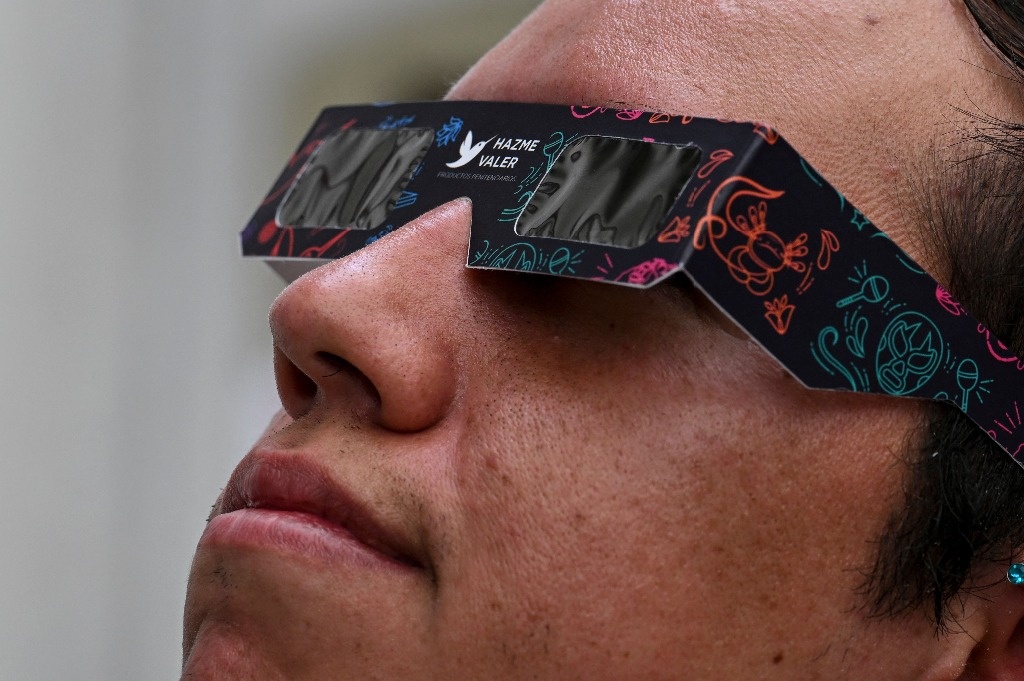On Monday what is already popularly known as The Eclipse of Mexico
because the best conditions for observing this celestial phenomenon will be in national territory.
The last time a total solar eclipse was observed in the country was on July 11, 1991, and it will not be repeated until 2052, 28 years from now.
Astronomers from the National Institute of Astrophysics, Optics and Electronics (Inaoe) reported that in Mexico the solar eclipse will be observed in two ways: total and partial. The three states where the total solar eclipse will be seen will be Sinaloa, Durango and Coahuila, which have favorable climatic conditions. In the Sinaloa port of Mazatlán it will begin at 9:51 in the morning, reaching its total phase between 11:07:25 and 11:11:45 hours. While in Durango and Torreón the maximum phases will be at 12:14 hours and 12:19 hours, respectively.
In other cities in the country it will be seen as a partial eclipse, that is, the surface of the Moon will not completely cover that of the Sun. In Puebla, for example, it will begin at 10:56 a.m., at 12:15 p.m. it will reach its maximum and It will conclude at 1:36 p.m. In Mexico City, 74.74 percent darkening of the solar surface will occur, and its maximum point of appreciation will be at 12:14 p.m.
Artistic and cultural activities
The interest in observing the astronomical spectacle does not diminish. An indicator of the expectation that there is among Mexicans for the eclipse is that a couple of days ago, four days before the event occurred, the National Autonomous University of Mexico (UNAM) reported that the sun filters that it made available were sold out. available to the public, while the National Polytechnic Institute distributed 2 thousand special visors with solar filter and will have a thousand more available.
The Islands, in Ciudad Universitaria, will become a large astrological observatory, for the more than 60 thousand people who are expected to come to contemplate the eclipse, as well as to enjoy the artistic and cultural activities organized by the highest house of studies in the Picnic under the shade program, which will take place from 10 a.m. to 4 p.m.
The agenda includes the participation of the Argentine composer and singer Daniela Spalla, the jazz, soul and R&B singer F-Mack and the Sinaloan band Mochis Bendit. While in the academic field, astronomers Jesús González and Aldo Rodríguez will be present, who will give the conference Mexico under the shadow of the moon: Solar eclipse 2024.
During the event, a guided meditation and sound harmonization session will be held using the technique of Tibetan bowls and other instruments such as the gong, harp, monochord, sansula, sitar, Mayan trumpet and handpan.
In turn, the Astronomical Society of the Faculty of Engineering (Safir) will install adapted telescopes to appreciate the astronomical phenomenon.
There will be four clotheslines with specialized lenses, which will be momentarily lent to visitors so that they can look at the astronomical phenomenon safely, for a few moments.
In addition, on the outer esplanade of Universum, UNAM Science Museum, there will be telescopes, with appropriate lenses; They will also have workshops paper eclipse y Anamorphism of an eclipsein addition to functions of its mobile planetarium.
While the Luis Enrique Erro Planetarium, of the IPN, invites the Solar Eclipse event, a cosmic adventure, which will begin at nine o’clock with the registration of amateurs with telescopes. Starting at 10 the general public will be able to enter. It is estimated that around 5 thousand people will participate.
The Secretariat of Prevention, Care and University Safety, through the General Directorate of Health Care, will provide first contact medical and/or ophthalmological services, in case of emergency; The General Directorate of Analysis, Protection and University Security will have one thousand free spaces available in parking lots 2, 3, 4 and 7 of the University Olympic Stadium; and the internal transportation service Pumabús will increase its runs during the time of the event.
Regarding campuses outside Mexico City, the National School of Higher Studies (ENES) Juriquilla organizes the Enesclipse meeting and will open its doors to the general public, so that they can participate in observation workshops and in the talks Gases we see, planets we do not know y The geography of the eclipseamong other.
In the Museum of Light Mérida, in the Experimentation Area, the workshops will be taught Projecting eclipses y Solar eclipse in your hands.
In Morelos, a team of researchers from the Institutes of Physical and Mathematical Sciences will offer talks and workshops in the municipalities of Jojutla, Tepoztlán, Chalcatzingo and Zacualpan de Amilpas.
(With information from Fernando Camacho)
On April 8, a total solar eclipse will dazzle millions of people in North America along a path that will begin in Mexico, cross the United States and end in Canada. Via Graphic News
#ready #Eclipse #Mexico
– 2024-04-24 17:08:07

